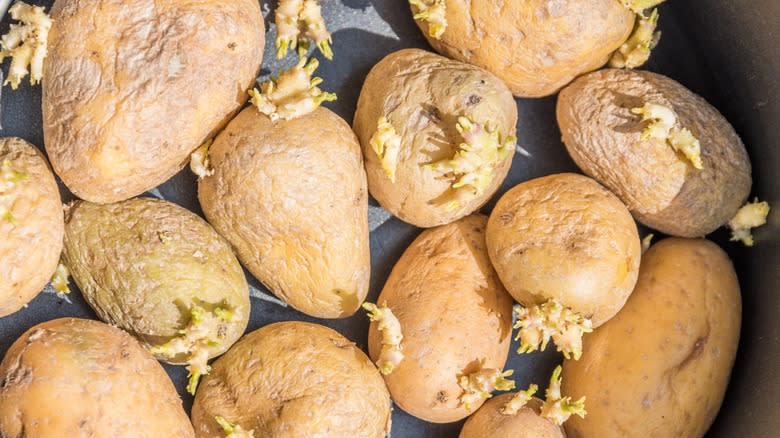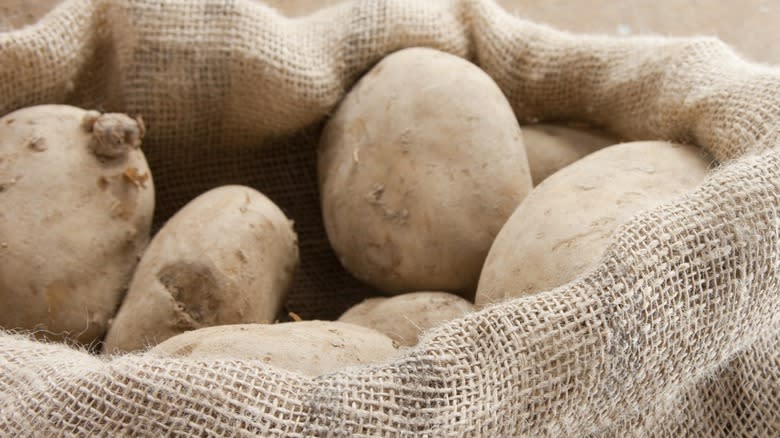Is It Safe To Eat Potatoes That Have Started Getting Wrinkly?

When we stock up on potatoes, the plan is often to use them over a period. However, they sit in our pantry, and before we know it, some of them start to look a bit off, showing signs of wrinkling or shriveling. It's a common scenario in many households, which brings us to the question of whether it's safe to consume these wrinkly potatoes.
According to experts at the University of Illinois, it's better to err on the side of caution and discard the shriveled taters. When stored for a long time, especially if the storage conditions are not ideal (like in a warm place), potatoes begin to lose their moisture. This moisture loss leads to the skin becoming loose and wrinkly. Furthermore, in warm conditions, the spuds may also start to sprout -- the potato's way of trying to grow and reproduce. While this is a natural process, it's a clear indicator that the potato is not in its prime state for consumption.
The main concern with consuming wrinkly potatoes is the potential health risk they pose. Visible signs of decay, such as wrinkling and sprouting, are a sign of the development of solanine, a natural toxin produced by potatoes. According to Healthline, solanine in small amounts doesn't usually affect humans, but its concentration can increase significantly in decaying or sprouting potatoes, leading to the risk of solanine poisoning. Symptoms can range from gastrointestinal distress to more severe reactions, including heart and nervous system issues, depending on the amount ingested.
Read more: 23 Types Of Potatoes And When To Use Them
Best Practices For Storing Potatoes

To ensure your potatoes stay fresh for as long as possible, proper storage is key. The ideal way to store potatoes is in a cool, dark, and well-ventilated space. The perfect temperature is around 45 to 50 degrees Fahrenheit. However, since getting such a cool environment is challenging in most homes, storing potatoes at room temperature (65 to 70 degrees Fahrenheit) is a practical alternative. At this temperature range your spuds can keep fresh for one to two weeks.
Light is another critical factor to consider. Potatoes should be stored in the dark to prevent the development of chlorophyll, which turns them green. While the green color itself is not harmful, it indicates a higher concentration of solanine, which, as mentioned earlier, can be toxic. Ventilation is equally important in preventing moisture buildup, which can lead to rot. Storing potatoes in a breathable container, such as a paper bag, a mesh bag or sack, or a cardboard box, allows for adequate airflow while protecting them from light.
Lastly, it's important to regularly check your stored potatoes for any signs of spoilage or sprouting. Removing the affected potatoes promptly can prevent the spread of decay and extend the freshness of the remaining potatoes. By following these storage guidelines, you can significantly prolong the life of your potatoes, reducing waste and ensuring that you always have fresh potatoes ready for your next meal.
Read the original article on Tasting Table.

